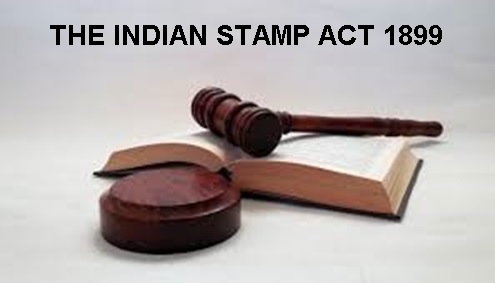Introduction:-
Intellectual Property (IP) Rights are intangible legal rights which are commonly utilized by the producers of the goods & services in India and other countries. Patents, Trademarks, Copyright, and Industrial designs are the major IPs. This writeup provides basics of Copyright protection as per the Copyright Act, 1957
What is meant by ‘Copyright’?
Copyright is considered as a natural right, which is automatically granted to the creator of the original works in the field of literary (which includes computer programs), dramatic, musical, and artistic works; cinematographic films; and sound recordings Copyright exists in the expression of the idea and not in the idea per se.
What qualifies as being an Original Work?
Original works are works which are independently created and is not copied from any pre-existing work. Though original works need not be novel or new, they have to demonstrate minimal degree of creativity in their creation.
Protection of Copyrights in India:-
The Copyright Law in India is governed by the Copyrights Act 1957 (the Act) and the Copyright Rules 2013 (the Rules). India has a copyright registration system headed by Registrar of Copyright at Copyright office at Calcutta. India is signatory to Berne Convention and Universal Copyright Convention and works protected in other signatory countries will automatically be protected in India without the need for registration.
Object of the Copyright Act:-
The object of the act is to provide protection and recognition to creators of original works, encouraging artistic and creative endeavours across various subject matters.
Copyright Registration Process:-
Both published and unpublished works can be registered. Filing of application for copyright registration can be done online. The following process covers complete filing requirements:-
- Filling of an application in FORM IV and to be sent to the registrar (at New Delhi) along with the requisite fees.
- A separate application has to be made for separate works
- Every application has to be signed by the applicant as well as an advocate in whose favour a Vakalatnama or a POA has been executed.
- Obtaining a Dairy No. from the registrar and then follow up with copyright registry for a mandatory waiting time for a period of 30 days for any objections to be received
- Copyright Registry internal process comprises
of:-
- If there are no objections received within 30 days, the scrutinizer will check the application for any discrepancy and if no discrepancy is there, the registration will be done and an extract will be sent to the registrar for the entry in the Register of Copyright.
- If any objection is received, the examiner will send a notice of objection to both the parties about the objections and will give them both a hearing.
- After the hearing, if the objections are resolved the scrutineer will scrutinize the application and approve or reject the application as the case may be.
Term of Copyright Protection:-
Generally, the term of the Copyright protection as regards human creator is the life of the author plus 60 years from the beginning of the calendar year following the year in which the author dies.
Why should one get their work registered under the copyright law?
It is not mandatory to get copyright registration but always advisable to do so because it will give the owner a certain set of minimum rights like proof of ownership.
Rights of the Copyright Owners:-
A Copyright owner enjoys various personal and proprietary rights. Proprietary rights include reproduction, distribution, leasing, exhibition, performance, broadcasting, dissemination, adaptation, compilation, translation etc. Personal rights would include moral rights, alteration and maintaining integrity of the work.
There are two types of rights under copyright:
- Economic rights, which allow the rights owner to derive financial reward from the use of his works by others; and
- Moral rights, which protect the non-economic interests of the author.
Can anyone use Copyrighted work without a license?
Yes, but only in special circumstances, such as:
- Use for the purpose of private study, research, or entertainment
- Quoting an appropriate portion from the Copyright work say, while teaching or public discourse
- Reporting of current events in newspapers, magazines, or radios/television
- Translating or reproducing in small quantity for use by teachers or scientific researches
- Performance free of charge
- Copying, drawing, photographing, or recording an artistic work placed or displayed in an outdoor public space
- Use by government officials in performance of their duties
Provisions to assert the ownership
The original owner of the copyright is the creator or author of the work. The one exception to this rule is when an employee creates work while performing duties as part of employment, in which case the employer assumes ownership of the copyright.
Copyright Societies:-
Copyright society is a registered collective administration society established by the authors and copyright owners for protection of their work. There should be at least seven members to form a copyright society and register it. Indian Performing Rights Society (established by music composers, lyricists and music publishers), Indian Reprographic Rights Organization (established by authors and publishers), and Indian Singers Rights Association (established by singers and performers) are some of the noted copyright societies.
Copyright Board:-
Copyright Board is a quasi-judicial body entrusted with the task of adjudicating the disputes pertaining to copyright registration, assignment, grant of licences, in respect of published and unpublished Indian works. Chairman of the board shall be a person who is or has been a judge of a High Court or is qualified for appointment as a Judge of High Court.
Copyright in Registered Trade Marks:-
Despite the fact that Copyright registration cannot be obtained for names of Trademarks, but the logo can be protected under both the trademark and copyright. The copyright registration for the logo can only be obtained if it is artistic in nature and possess some unique creation.
On the other hand, For Copyright protection of artistic works an NOC must be obtained from Trademark registry for ascertaining non-availability of same / similar work in the form of Logo of a registered trade mark.
A noted amendment to Copyright Act 1957,
The Copyright Act, 1957 (the ‘Act’) came into effect from January 1958, till today the act was amended multiple times of which copyright amendment bill 1984 is noteworthy, as it was brought to fight against three types of piracy prevailing in the country, namely, piracy of the printed word, sound recordings and cinematograph films which were curtailing remunerations due to the authors, artistes, publishers, and producers and also was causing crores of rupees losses to the Government in terms of tax evasion.
Copyright Infringement and Remedies:-
The copyright owner is provided with legal remedies such as civil, criminal, and administrative remedies
Civil remedies encompass restitution, injunctions, account interpretation, deletion and surrender of copies made infringing, as well as conversion damages.
criminal penalties can take the form of jail time, fines, searches, the seizure of contraband, etc. The maximum sentence for imprisonment is 3 years, but it cannot be less than 6 months, and the maximum fine is between 50,000 and 2,00,000 rupees.
A reference from recent SC order on Copyright infringement:-
Supreme Court (SC) elevates the copyright infringement to a serious non-bailable offence. SC said on infringement of copyright in 2022 in “The Knit Pro International v State of NCT of Delhi & Anr (Criminal Appeal 807, 2022)” where it was held that “That the offence under Section 63 of the Copyright Act is a cognizable and non-bailable offence.
Conclusion
The copyright law is considered as an essential law of protection for writers, authors, performers, and creators in a country because it enriches its national cultural heritage. Higher the level of protection given to literary, dramatic, musical, or artistic work in any country, higher will be the volume and variety in creation for economic, cultural, and social development.






